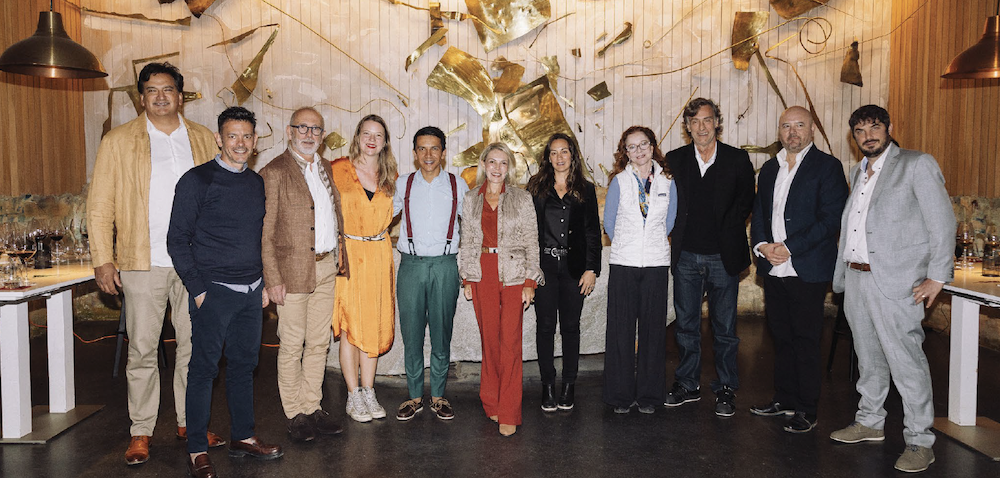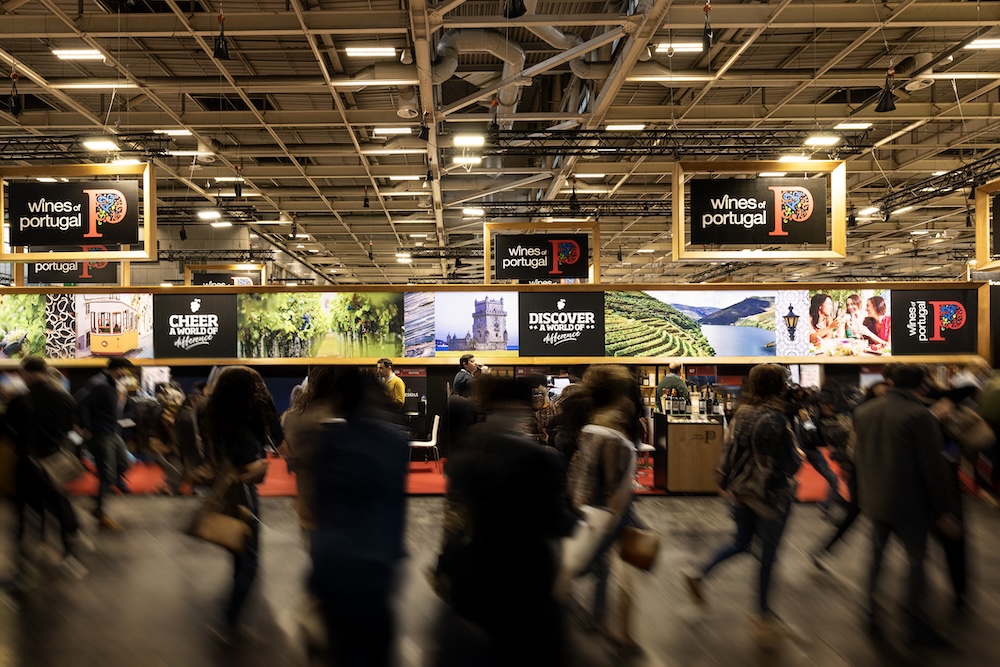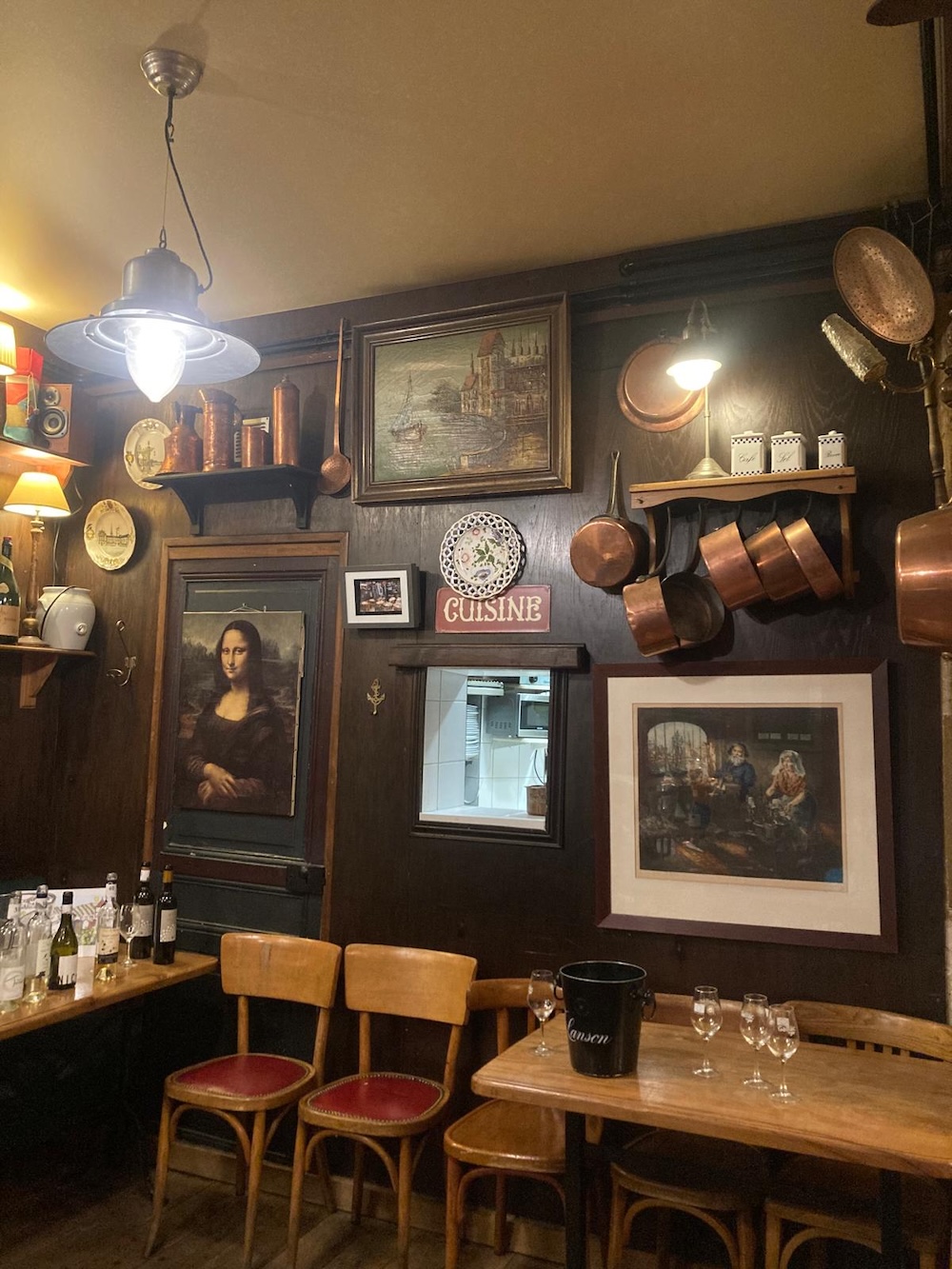
Discovery

Discovery
By Alain Echalier, posted on 03 February 2022
In the far South of Burgundy, between the Chalonnais and Beaujolais, is an area home to 43 appellations, including 5 Crus and 1er Crus. Renowned for offering the best value for money among Burgundy whites, there is an endless range of styles, extending to reds and Crémants. Alain Echalier explains more.
Geographically, the Mâconnais is situated between the Grosne valley in the West and the Saône valley in the East. Fifty kilometres long and 15 wide, the area boasts 6 hill chains peaking at 400 m above sea level, rising to 500 m for the Rocks of Solutré and Vergisson. These two limestone escarpments, used by mankind since prehistoric times, often encapsulate the region’s picture-postcard.
The soils where the vines grow are limestone, sand or clay, with stony scree of varying sizes. At the bottom of the slopes are silt or marly soils, and in the far southern tip, near Beaujolais, the soils are clayey-siliceous.
The climate is temperate, with an oceanic and southern influence. Although there is a general trend towards global warming, farming’s main stumbling blocks over the past few years have been the sudden weather events. Even though vines are also exposed, they remain the region’s primary activity.
 Checking the wines’ balance during maturation at Domaine Raphael Sallet.
Checking the wines’ balance during maturation at Domaine Raphael Sallet.
Along with his wife Marylène, Raphaël Sallet runs an estate he created 35 years ago. Starting with 0.6 hectares, he explains how he has gradually planted vines and now manages 30 hectares. His modest explanation is, “land was available". The farm is located in Uchizy, in the North of the area, near Tournus and a village called... Chardonnay. Although the area’s viticulture is based on its namesake grape variety, Sallet smiles when asked if it was named after the village. “We now know that the grape variety may have more distant origins, and the name of the village apparently means places with thistles. But the ambiguity is amusing, so why put a stop to it?” Most of the wines are Mâcon-Villages. Sallet explains the nuances: this northerly area produces a white wine called Mâcon blanc or Mâcon Chardonnay. But when the juice comes from one of the 27 villages where the soils are a little more interesting, a complementary geographical designation is added. These include Mâcon-Azé and Mâcon-Bray, through to Mâcon-Vinzelles. He produces primarily Mâcon-Uchizy. Production specifications, which are slightly more restrictive in terms of yield, add to the intensity of the wines with a geographical designation. And if ever juice from several of the listed villages is used, it is referred to as Mâcon-Villages (in the plural).
Sallet likes energetic wines, with a good acid-alcohol balance . Due to climate change, he harvests very early in the morning. In just 2 hours the grapes are in the press, and the metal tanks are temperature-controlled . But what is the difference between his wines and Chablis? “A Mâcon generally features more fruit, but more importantly, it is now much more affordable”.
 Jean-Christophe Perraud.
Jean-Christophe Perraud.
A little farther South, at the aptly-named ‘La Roche Vineuse’, is Jean-Christophe Perraud’s. Created in 2005 from family vineyards passed down through 4 generations, it currently covers 37 hectares. Perraud sells a lot of Mâcon-Villages. He explains that in the past, most winegrowers sold in bulk under the appellation, enabling shippers to use wines from several villages. The use of village names is concurrent with the advent of bottling by the growers themselves. Perraud bottles almost everything on his farm, but Mâcon-Villages is more renowned among his trade-only clientele than Mâcon-La Roche Vineuse. Conversely, he also has vines in Fuissé, which is better known and he thus produces a Mâcon-Fuissé.
Perraud uses new barrels to mature some of his wines for 12 to 24 months. However, the aim is not to produce heavily oaked wines, as the format is the 600-litre demi-muid which provides less wine-wood contact surface. “Tastes are changing”, he says. “Gone are the days when there was high demand for very oaky wines among the English-speaking world”. Neither does he stir his wines to develop fat. Quite the opposite, in fact. Leaving them to rest guarantees that their acidity will be preserved. “You have to be able to smell the wine”, he says with disarming simplicity.
The estate is being converted to organic. In 2021, despite very challenging conditions, with rain and often cold weather, they managed to cope and forego the use of chemicals. And that was no mean feat.
 The winery for Révélis.
The winery for Révélis.
Charles Lambolley is the marketing director of this co-operative whose membership embraces 120 families. The winery is based in Prissé, in the northern part of the Saint-Véran appellation. The cooperative's vineyards cover a total 900 hectares, spanning a range of appellations such as Mâcon-Villages and Pouilly-Fuissé. However, alone it accounts for 40% of Saint-Véran production. The co-operative supplies 60 single-vineyard labels, representing 45% of output. “It's a growing trend”, says Lambolley, “but not a new one. We have been making single-vineyard wines since the 1990s”.
The Saint-Véran appellation was created in 1971, well after Mâcon. It's a Cru, so you can expect a little more noticeable intensity than with a Mâcon-Villages. But the appellation covers two areas, on either side of Pouilly and Fuissé. To the North, where the winery is located, the soils are chalkier, and therefore offer up tension and minerality. To the South are the first pockets of granite and the wines show a little more fat. The market recognises the Cru classification – a straightforward Mâcon-Villages sells for around €7 to 8, whereas a Saint-Véran ranges from €8 to 15, depending on the age of the vines and the complexity of the wine. In some of the top-ranking blocks, 1er Cru classification is ongoing, and Lambolley hopes it will reach completion in maybe 2 to 3 years’ time.
In 2016, the co-operative winery brought together a group of 20 young winegrowers to create an iconic label, the winery’s ultimate offering. Blocks from 5 different vineyard sites are selected for the strong minerality and structure they instil in the wines. The soils are ploughed by horse, excess grapes are removed by cluster thinning, the fruit is picked by hand, and the wines are neither fined nor filtered. The overriding ambition here is to do everything to perfection. The resultant label has been named Révélis, a micro-batch of 1,500 bottles. The producers’ pride is tangible.
Also in Prissé is Domaine de la Feuillarde. Owned by the same family DF1 for four generations, 18 of its 20 hectares under vine are in a single block surrounding the buildings. The Thomases, who mainly produce Saint-Véran with a little Pouilly-Fuissé, point out that the reason Saint-Véran is generally finer than a Mâcon, even a Villages, is because the soils are slightly shallower – the bedrock is not far below the surface. Grass cover is deliberately used in every other vineyard row to manage water resources and the soils are mainly hoed to limit the use of weed killers. Although the property is not organic, it is not far off. For the last five years, green harvesting has not been necessary because yields are naturally low. 2021 proved to be a particularly difficult year, with frost, hail and mildew! They’ll be happy if they make 20% of the usual volume, and they may not even have enough wine to tide them over until 2022.

Low yields do not preclude a variety of labels. The Thomases make three: ‘Tradition’, which is bottled early; Vieilles Vignes, where the wines are matured for 9 months on the lees; and ‘Prestige’, matured in 500-litre barrels made from Allier oak, which leaves less of a stamp on the wines. The Thomases, who take part in numerous exhibitions, sell a lot directly to private customers and the restaurant trade. The market positioning of the Saint-Véran appellation is perfect for many restaurants. On the whole, they say, every winegrower here has their own distribution network. Unlike neighbouring Pouilly-Fuissé, where negociants are very active, as a young appellation Saint-Véran has allowed winegrowers to establish their own, individual customer base.

The village of Cléssé is home to a small co-operative winery with around fifteen grape suppliers, who harvest fruit from 90 hectares of vines. Located in the middle of the Mâconnais, the villages of Viré and Cléssé, which have long been close allies, secured their own stand-alone appellation in 1999. The area is very small and produces only 25,000 hl a year. But it does have a micro-climate and some specific features, explains the cellar master Mr. Mollard.
The rainfall regime, for example, is different. Also, the local custom is to harvest a little later than in the surrounding villages VB2. Consequently, the wines are a little rounder, weigh in at 14% ABV and have around 4 g/l of residual sugar, whereas a classic Mâcon is more 1 g/l. Although acidity is slightly less pronounced because of this, and winemakers who buy for the trade often require tartaric acid to be added, the winery’s cellar master deliberately takes a more hands-off approach. The appellation style is at stake! The difference between a Mâcon and a Viré-Cléssé is all the more marked in cool vintages, which will likely be the case for the 2021s. Also, some blocks are planted with a particular grape variety – Chardonnay Muscaté. The heirloom cultivar is very fragile at flowering, but if this coincides with good weather, the juice lends the wines a faint Muscat-touch on the palate, making them incredibly aromatic. In recent years, the warm spring of 2018 reproduced these sensory characters well.
Some areas promote the onset of noble rot, allowing sweet Chardonnays to be produced. Overripe grapes affected by botrytis are locally referred to as ‘levroutés’, because their skin is similar to that of a hare's coat. Use of the term has now spread and it designates sweet wines with up to 18 g/l of residual sugar, even when there is no noble rot.
 Clémence Vandenbroucke sells wines for Domaine Sangouard-Guyot.
Clémence Vandenbroucke sells wines for Domaine Sangouard-Guyot.
Clémence Vandenbroucke , who markets Pierre-Emmanuel and Catherine Sangouard-Guyot's wines, tells us about the estate. Located in Vergisson, it has 15 hectares of Chardonnay. Eleven of them are set in Pouilly-Fuissé, in some ways the region’s star appellation area. The clay-limestone soil, as encapsulated by the Rocks of Solutré and Vergisson, lends the wines their specific minerality. They enjoy a long-standing reputation, promoted by negociants who were quick to successfully market the wines abroad, particularly in the United States. The style is generally slightly oakier than Mâconnais wines, and it went down well with English-speaking imbibers when barrels were very much in vogue.
Vandenbroucke explains that the estate makes three different labels. ‘Authentique’ is made in tanks while Ancestrale comes from grapes grown on the grandfather's block of vines. It is matured in 3 to 5 year-old barrels, hence the very soft oakiness on the palate. ‘Quintessence’, conversely, is made in barrels under three years old . Demand is high. 60% of the wines are shipped to America and depletion rates are high. A Pouilly-Fuissé typically keeps longer than a Mâcon, reaching its peak after around 3 to 5 years, slightly more for Quintessence; a Mâcon peaks at around 2 to 4 years. And although Pouilly-Fuissé has a price tag of about €20, slightly higher than a Mâcon or even a Saint-Véran, it is still much less expensive than wines from the Côte de Beaune, quips Vandenbroucke.

In the heart of the village of Fuissé is the Luquet family estate. Founded in 1878, it now covers 30 hectares and the family produces all the region’s appellations, with the exception of Viré-Cléssé. Among its 7 hectares of Pouilly-Fuissé, Patrick Luquet explains that about 1 hectare has just been classified as 1er Cru. After 13 years of studies, INAO awarded 1er Cru status to some of the appellation’s prime sites in 2020. Obviously specifications are also more restrictive – yields, for example, must be lower to concentrate the juice. It is also a source of pride and peer recognition for the winegrowers in the Mâconnais, says Luquet. The prices of the wines show consistency, and some of the estate’s customers have been coming for several generations. The Luquets also make some Pouilly-Loché, a diminutive appellation which, like its neighbour Pouilly-Vinzelles, lies to the far East of Pouilly-Fuissé. The trend for oaked wines emerged in the 1990s to meet demand from America, but neither Patrick’s grandfather nor his father went down that route. He personally did, but in moderation, for just 6 of his 17 labels. Oak may make life easier, but it sometimes masks terroir effect.
Although they are not certified organic, Luquet wines are all but. Lucquet uses only a modicum of inputs, with no yeast, no enzymes or tartaric acid. He supports the idea of displaying this on the labels, and has not even recruited the help of a winemaking laboratory.
Prior to the phylloxera crisis, the entire Mâconnais region was mainly planted to Gamay, but red wine is virtually non-existent nowadays. In fact, the best wines are to be found in the North and South of the area. In the North, the soils and climate that are most similar to the rest of Burgundy are suitable for growing Pinot Noir, spawning a regional appellation – Bourgogne Pinot Noir. Even though the Mâcon appellation allows red wine to be made from Pinot Noir, the global reputation of Burgundy and its iconic grape variety take commercial precedence.
To the South, the soil, which is starting to morph into granite – Beaujolais is not far away – is suitable for growing Gamay. In this case, growers append the red Mâcon appellation. But few of them actually make it and many admit that when their vines are too old, they will replace them with... Chardonnay.
The main takeaway from this under-the-radar region is that it offers a complete range of Chardonnays, from very simple pours to the most complex. All of them, though, share the same great freshness and some of them have unique aromas, bearing little or no resemblance to the classic whites of the Côte de Beaune. Also, the wines here are still affordable, but that’s one piece of information we should keep to ourselves!

Discovery

Discovery

Discovery